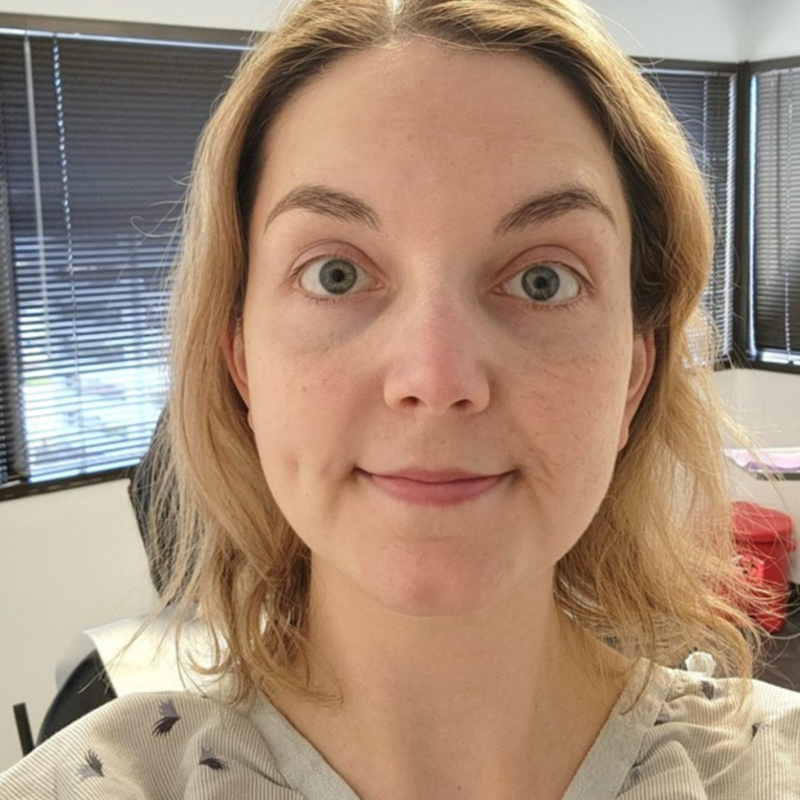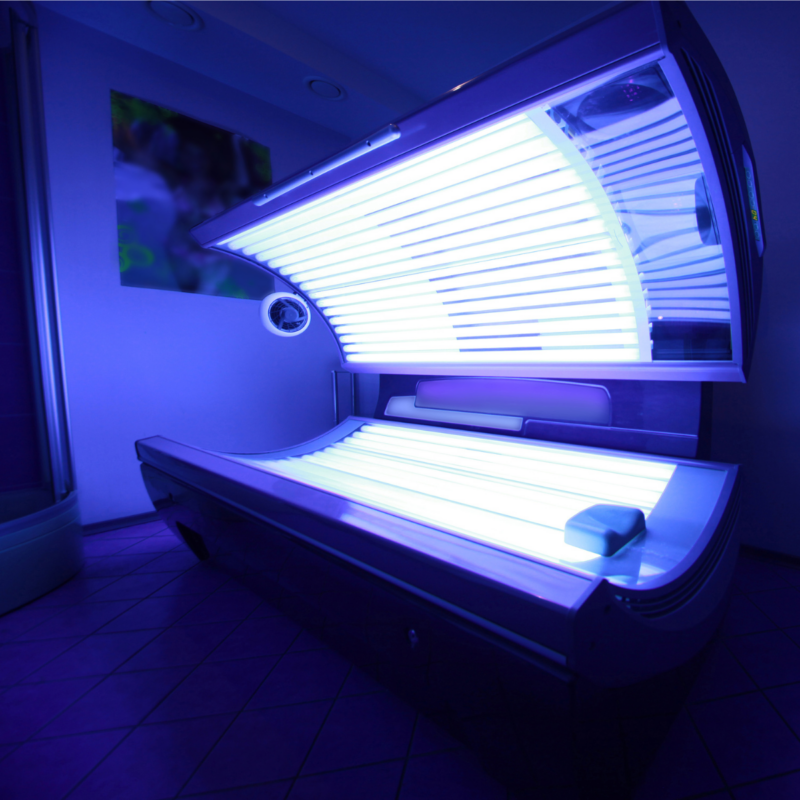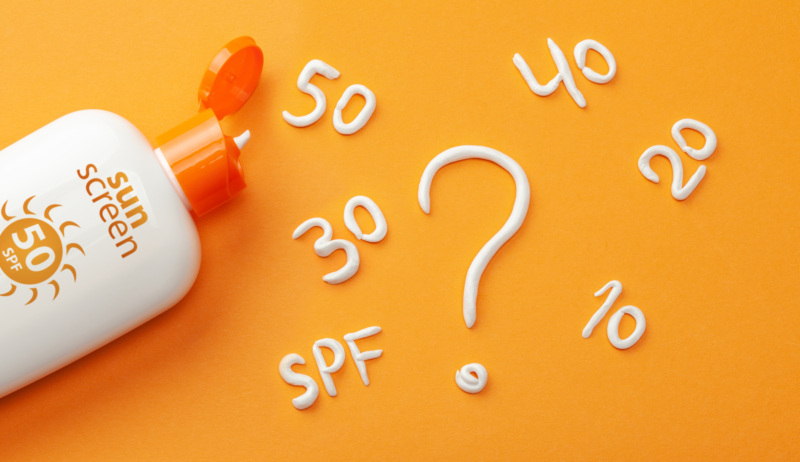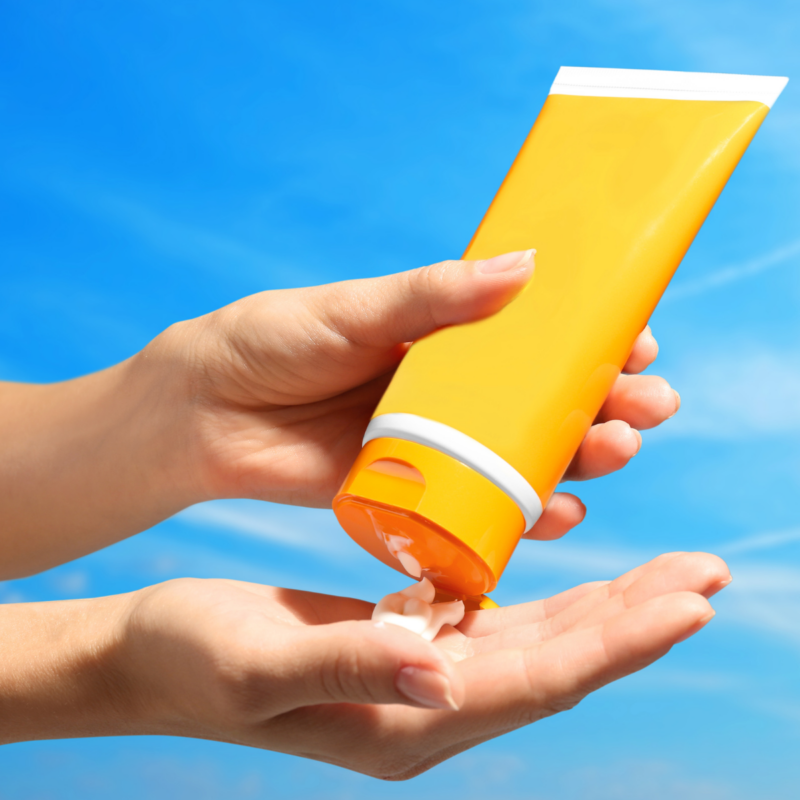በሁሉም ዕድሜዎች: ወርሃዊ ራስን ማረጋገጥ
የሚለውን ተጠቀም ABCDEs የቆዳ ካንሰር የሜላኖማ ምልክቶችን በወር አንድ ጊዜ ቆዳዎን ለማጣራት. እርስዎን የሚመለከት ሞለኪውል ካለብዎ ወዲያውኑ የጤና እንክብካቤ አቅራቢዎን ይመልከቱ።
የቆዳ ካንሰር በዩኤስ ውስጥ በጣም የተለመደ የካንሰር ምርመራ ሲሆን በጣም መከላከል ከሚቻሉ ካንሰሮች አንዱ ነው። እሱ ሁለቱንም ሜላኖማ ያልሆነ የቆዳ ካንሰር - ባሳል ሴል ወይም ስኩዌመስ ሴል ካርሲኖማ - እንዲሁም አደገኛ ሜላኖማ ያጠቃልላል። አብዛኛዎቹ የቆዳ ካንሰሮች የሚከሰቱት በፀሃይ አልትራቫዮሌት (UV) ጨረር ጉዳት ነው። ሜላኖማ በጣም አደገኛው የቆዳ ካንሰር ዓይነት ነው።
የቆዳ ቀለም ምንም ይሁን ምን ሁሉም ሰው ለቆዳ ካንሰር ይጋለጣል.
የሚለውን ተጠቀም ABCDEs የቆዳ ካንሰር የሜላኖማ ምልክቶችን በወር አንድ ጊዜ ቆዳዎን ለማጣራት. እርስዎን የሚመለከት ሞለኪውል ካለብዎ ወዲያውኑ የጤና እንክብካቤ አቅራቢዎን ይመልከቱ።
የጤና እንክብካቤ አቅራቢ በየአመቱ ቆዳዎን እንዲመረምር ማድረግ ጥሩ ሀሳብ ነው።
Skin cancer can be harder to identify on darker skin tones as compared to on light or fair skin tones. If you have darker skin, it’s a good idea to have your skin checks done by a health care provider, like a dermatologist, who is experienced in identifying skin cancer on all skin tones and knows what to look for.
የዩኤስ መከላከያ አገልግሎት ግብረ ኃይል (USPSTF) ለዓመታዊ የቆዳ ካንሰር ቼኮች “I” ደረጃን ይሰጣል፣ “በቂ ማስረጃ የለም” - ለዓመታዊ የቆዳ ምርመራ አይመክሩም ወይም አይቃወሙም። በውጤቱም፣ የእርስዎ ኢንሹራንስ ወደ የቆዳ ህክምና ባለሙያ አመታዊ ጉብኝት ሊሸፍን ወይም ላያጠቃልል ይችላል። ይህ ጉብኝት የሚሸፍን መሆኑን ለማየት ከኢንሹራንስ ኩባንያዎ ጋር መፈተሽ ይችላሉ (በዓመታዊ ፍተሻዎ ላይ ቆዳዎን በዋና ተንከባካቢዎ ማረጋገጥም ይችላሉ።
በወር አንድ ጊዜ ቆዳዎን አጠራጣሪ ሞሎች መኖሩን ማረጋገጥ እና ማንኛውንም ያልተለመደ ነገር ለጤና እንክብካቤ አቅራቢዎ ማሳወቅ አስፈላጊ ነው።
ስለ ABCDE ደንብ የበለጠ ይወቁየሚከተሉትን ካደረጉ ለቆዳ ካንሰር የመጋለጥ እድልዎ ይጨምራል።
ከአኗኗር ዘይቤ ጋር በተያያዙ ማሻሻያዎች አማካኝነት ለቆዳ ካንሰር ተጋላጭነትን መቀነስ ይችላሉ።
ለቫይታሚን ዲ የፀሐይ መጋለጥ ይፈልጋሉ? አንዳንድ ባለሙያዎች ቫይታሚን ዲዎን ከፀሀይ ብርሀን ይልቅ ከምግብ ወይም ከተጨማሪ ምግቦች ማግኘት የተሻለ ነው ይላሉ. ስለ ቫይታሚን ዲ እና ጤናዎ ከጤና እንክብካቤ አቅራቢዎ ጋር ይነጋገሩ።
በፀሐይ ውስጥ ከቆዩ, ደመናማ በሆኑ ቀናት ውስጥ እንኳን, በየሁለት ሰዓቱ እንደገና ያመልክቱ. በበጋ ወቅት ብቻ ሳይሆን ዓመቱን ሙሉ ቆዳዎን ከመጠን በላይ ከፀሐይ መጋለጥ ይጠብቁ።
የፀሐይ መነፅርዎ በጥሩ ሁኔታ መያዙን ያረጋግጡ እና 99-100% ከ UVA እና UVB ጨረሮች ጥበቃ ያቅርቡ (እነዚህ በ UV400 ደረጃ ምልክት ይደረግባቸዋል)።
በፀሐይ ውስጥ ከቆዩ, ደመናማ በሆኑ ቀናት ውስጥ እንኳን, በየሁለት ሰዓቱ እንደገና ያመልክቱ. በበጋ ወቅት ብቻ ሳይሆን ዓመቱን በሙሉ ከንፈርዎን ከመጠን በላይ ከፀሐይ መጋለጥ ይጠብቁ።
ስለ ማንኛውም የቆዳ ለውጦች ወይም ዓመታዊ የቆዳ ምርመራ ለማድረግ የጤና እንክብካቤ አቅራቢዎን ይመልከቱ።
በወር አንድ ጊዜ የሜላኖማ ምልክቶችን ለማወቅ የቆዳ ካንሰርን ኤቢሲዲኤ ይጠቀሙ። አጠራጣሪ ሞለኪውል ወይም ከሚከተሉት ምልክቶች አንዱ ካለብዎ ወዲያውኑ የጤና እንክብካቤ አቅራቢን ይመልከቱ፡-
ሕክምናው እንደ የቆዳ ካንሰር አይነት፣ እንደ በሽታው ደረጃ እና በህክምና ሁኔታዎ ላይ የተመሰረተ ነው።
ለቆዳ ካንሰር በጣም የተለመደው ሕክምና ካንሰርን ለማስወገድ ቀዶ ጥገና ነው.
ይህ የካንሰር ሕዋሳትን ለመግደል መድሐኒቶችን የሚጠቀም ሕክምና ነው። ከቀዶ ጥገና በፊት ወይም በኋላ ብቻውን ወይም ከሌላ ሕክምና ጋር በማጣመር ጥቅም ላይ ሊውል ይችላል.
ይህ ህክምና የካንሰር ሕዋሳትን ለመግደል እና እጢዎችን ለማጥበብ ከፍተኛ መጠን ያለው የጨረር መጠን ይጠቀማል። ከቀዶ ጥገና በፊት ወይም በኋላ ብቻውን ወይም ከሌላ ሕክምና ጋር በማጣመር ጥቅም ላይ ሊውል ይችላል.
ይህ ዓይነቱ የካንሰር ህክምና የሰውነት በሽታ የመከላከል ስርዓትዎ ያልተለመዱ ሴሎችን ለመለየት እና ለማጥፋት ለካንሰር የተሻለ ምላሽ እንዲሰጥ ይረዳል. ከቀዶ ጥገና በፊት ወይም በኋላ ብቻውን ወይም ከሌላ ሕክምና ጋር በማጣመር ጥቅም ላይ ሊውል ይችላል.
29% of U.S. adults have never had a skin check for skin cancer. Lorelei Mitrani describes her first skin check and details what you can expect.
ተጨማሪ እወቅ




